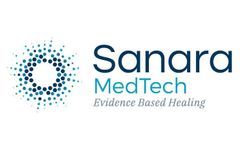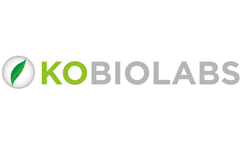Inflammatory Mediator Articles & Analysis
12 articles found
In surgical tissue recovery, focus is on controlling infection, managing inflammation, and ensuring wound closure. Beneath the surface—anatomically and biologically— the extracellular matrix (ECM) is undergoing remodeling ensure long-term tissue integrity. The ECM is a dynamic, biologically active network that orchestrates the entire process of tissue repair, remodeling, and ...
They activate immune cells, stimulate their proliferation and differentiation, and promote their migration to target sites. Inflammatory Response: Cytokines play a central role in the initiation and resolution of inflammation. They induce the production of inflammatory mediators, increase vascular permeability, and promote the recruitment of ...
IL-17 ligands produce organ-specific pro-inflammatory or anti-inflammatory responses through their corresponding receptors. ...
Activation of MAPK leads to transcription of inflammation genes regulated by AP-1 (activator protein-1), while phosphorylation of Ikβ α (a negative regulator of NF-κB) by Ikβ kinase leads to the translocation of NF-κB to the nucleus, aiding in the transcription of key inflammation genes, thus generating numerous inflammatory mediators ...
However, abnormal complement activation can lead to excessive complement depletion, attack on own normal cells, and release of a large number of inflammatory response mediators, which induces an immune inflammatory response, thus causing damage to the organism. ...
. * Whole transcriptome analysis: genes related to proliferation were up-regulated and genes related to the regulation of immune system processes (e.g., MUC1, MUC5B), inflammatory response-related genes (e.g., IL1LR1, GPX4, ADCY5) and extracellular matrix tissue-related genes (LAMB3, MMP1) were down-regulated, suggesting that CD133+ hBECs may have greater regenerative capacity. * ...
In contrast, γδ T cells, expressing γδ TCR, are effector cells in the innate immune system, which function in an MHC-unrestricted manner, making them ideal mediators for cancer immunotherapy. Recent studies have shown that γδ T cells have potent cytotoxic effects against various types of cancer cells. ...
Intestinal inflammatory diseases are highly complex, which has thus far prevented development of an effective in vitro disease model. With access to a donor-derived cell biobank and the ability to recapitulate region-specific environments of the intestine, Altis Biosystems is working toward the development of an in vitro RepliGut® model to accurately recapitulate the complex ...
Effects of oral administration ofL. rhamnosus KBL365 orL. paracasei KBL382 on Th1, Th2, Th17, and anti-inflammatory cytokine production in the skin of AD mice. Protein levels of the T helper (Th)2-type cytokines (A) interleukin (IL)-4, (B) IL-5, and (C) IL-13, Th1-type cytokine (D) IFN-γ, Th17-type cytokine (E) IL-17A, and anti-inflammatory cytokine (F) ...
Abstract Fibronectin in the vascular wall promotes inflammatory activation of the endothelium during vascular remodeling and atherosclerosis. ...
Moreover, administration of 5 mg/kg of the inflammatory mediator lipopolysaccharide (LPS) resulted in an upregulation of the PCSK9 level associated with a 2-fold increase in LDL-C. ...
Released oxidants can further induce the release of inflammatory mediators in various cells initiating localized chronic inflammation. ...








